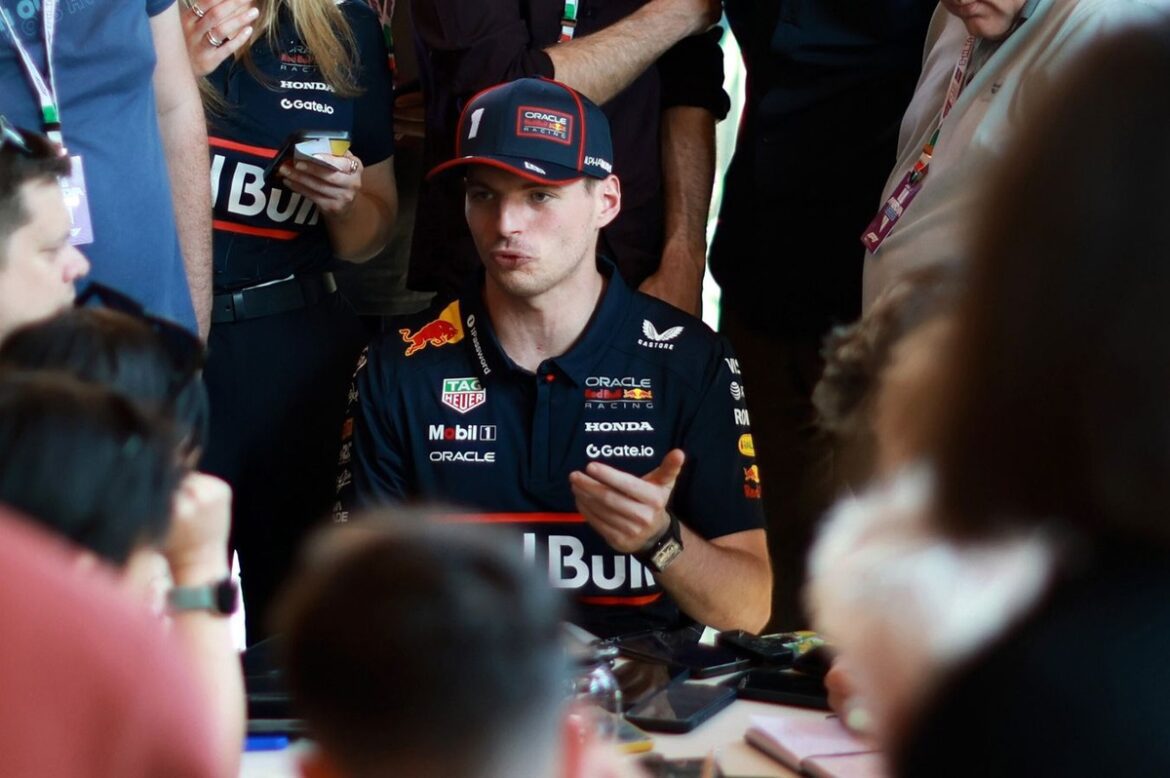Max Verstappen has expressed skepticism about the possibility of Red Bull Racing significantly closing the gap in race pace to McLaren in the near future, despite the introduction of a number of upgrades for their 2025 Formula 1 car. During the recent Miami Grand Prix, Verstappen finished 40 seconds behind McLaren’s Oscar Piastri, who emerged victorious. Although Verstappen had secured pole position, he struggled during the race, highlighting McLaren’s superior performance.
As the team prepares for upcoming races, Verstappen’s car has received a new floor design, and his teammate Yuki Tsunoda is set to benefit from the same upgrades at the Imola circuit. Both drivers will have additional enhancements available for the first European Grand Prix of the season.
When asked about the expected performance improvement from the latest iteration of the RB20, Verstappen remarked, “A little bit. But we have already had a few races with some updates, so this is again a little step forward. Hopefully, we find a bit more performance in the car. But I don’t expect, of course, to suddenly close the gap to McLaren.” His comments reflect a cautious optimism but also a clear understanding of the challenges ahead.
Reflecting on the Miami race, which team advisor Helmut Marko described as disappointing, Verstappen noted, “The race pace was depressing for everyone except McLaren. No one was even in the same league there. That is, of course, a big concern.” This statement underscores the urgency for Red Bull to address the issues they are facing in race conditions.
In two weeks, further upgrades are anticipated for the Spanish Grand Prix in Barcelona, coinciding with the implementation of a stricter technical directive aimed at addressing the flexing of front wings. This directive is believed to primarily target McLaren, which has been accused of exploiting aerodynamic elasticity. However, it appears that most teams, regardless of their exploitation of this phenomenon, will need to adapt to a new set of specifications that are more robust due to the new load tests.
While many in the Formula 1 community are eager to see how McLaren’s performance might be affected by these changes, Verstappen remains skeptical about the impact of the FIA’s new technical directive. “That will not give you eight tenths to a second, of course, [which was the gap] at times in Miami,” he stated, emphasizing that substantial improvements are unlikely to materialize simply due to regulatory changes.
One of the most pressing concerns for Red Bull and other teams is understanding why McLaren has been able to manage its rear tires effectively during races that experience high degradation. When asked about how Red Bull could improve its tire management to get closer to McLaren, Verstappen replied, “It’s a bit impossible to know until we figure it out. I don’t know when or how we are going to figure it out. It takes time.”
He further elaborated, “It’s also a bit track-specific. I guess it works a bit better for them because sometimes there’s a bit more thermal degradation than others. The advantage will not always be that big. [Pirelli bringing its softest tires to Imola] will not help in our case. We’ll see.”
As the Formula 1 season progresses, the battle for supremacy on the track intensifies. Teams are continuously working to develop their cars, seeking that elusive edge that can make all the difference in both qualifying and race conditions. The complexities of tire management and aerodynamic performance play a crucial role, and understanding these elements can define a team’s trajectory for the season.
The upcoming races will not only test the teams’ technical capabilities but also their strategic acumen. Every decision made regarding car setup and tire choice could have significant implications for race outcomes. The competitive nature of Formula 1 means that even small improvements can lead to substantial gains on the track.
As Red Bull seeks to address its performance issues, the collaboration between drivers and engineers will be vital. Feedback from drivers like Verstappen and Tsunoda will be essential in refining car setups and optimizing performance. Understanding how different tracks affect tire behavior and car handling will be crucial to enhancing their competitiveness.
With the changes in regulations and the introduction of new specifications, teams will need to adapt quickly. The constant evolution of car design and technology means that teams must stay ahead of the curve to remain competitive. Each race presents an opportunity for teams to learn and iterate, making the development race as important as the races themselves.
As fans eagerly anticipate the next Grand Prix, the dynamics within the teams and the strategies they employ will be closely scrutinized. The rivalry between Red Bull and McLaren adds an exciting layer to the competition, with each team striving to gain the upper hand.
Verstappen’s insights into the challenges faced by Red Bull highlight the complexities involved in Formula 1 racing. The interplay between car performance, driver skill, and strategic decision-making creates a rich tapestry that defines the sport. As teams navigate this intricate landscape, the quest for victory remains a driving force.
The upcoming weeks will undoubtedly bring further developments, both on and off the track. With each race, teams will be looking to capitalize on their strengths while addressing their weaknesses. The fierce competition ensures that fans will be treated to thrilling races that showcase the pinnacle of motorsport.
As the season unfolds, the focus will remain on how quickly Red Bull can adapt to the challenges posed by McLaren and other competitors. The journey to reclaiming their position at the top of the grid will require not only technical prowess but also resilience and determination.
In conclusion, the road ahead for Red Bull Racing is filled with challenges, but the team’s commitment to improvement and performance will be key to their success. As the season progresses, the dynamics of competition will continue to evolve, and the excitement of Formula 1 racing will undoubtedly keep fans on the edge of their seats.
